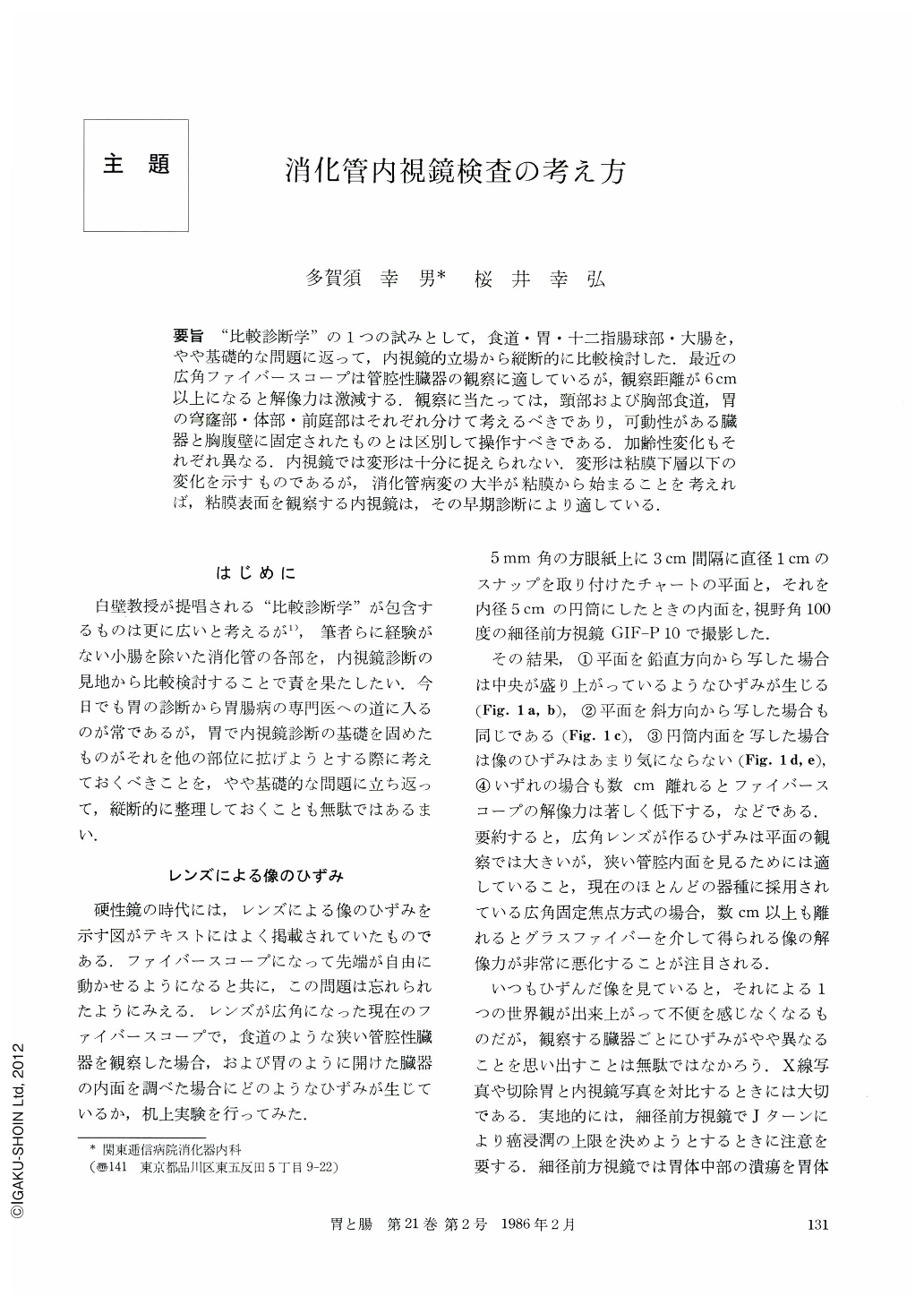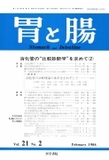Japanese
English
- 有料閲覧
- Abstract 文献概要
- 1ページ目 Look Inside
要旨 “比較診断学”の1つの試みとして,食道・胃・十二指腸球部・大腸を,やや基礎的な問題に返って,内視鏡的立場から縦断的に比較検討した.最近の広角ファイバースコープは管腔性臓器の観察に適しているが,観察距離が6cm以上になると解像力は激減する.観察に当たっては,頸部および胸部食道,胃の穹窿部・体部・前庭部はそれぞれ分けて考えるべきであり,可動性がある臓器と胸腹壁に固定されたものとは区別して操作すべきである.加齢性変化もそれぞれ異なる.内視鏡では変形は十分に捉えられない.変形は粘膜下層以下の変化を示すものであるが,消化管病変の大半が粘膜から始まることを考えれば,粘膜表面を観察する内視鏡は,その早期診断により適している.
A comparison of the each organ of the gastrointestinal tract from an endoscopic point of view may be helpful for endoscopists who are obliged to examine every part of it.“Comparative diagnosis”advocated by Prof. Shirakabe probably denotes in part a consideration of this. In instrumental aspect, a forward-viewlng fiberscope with very wide angle of view, extensively used recently, seems suitable for the observasion of a hollow organ. However its resolution decreases considerably for an object 6cm or more apart from its lens.
The cervical esophagus is packed by many surrounding organs and its muscle layer is striated one. On the contrary, thoracic esophagus is in negative pressure of the thorax and its muscle is smooth one. The muscle coat of the gastrointestinal tract consists of two layers but it is three in the gastric body. The stomach, transverse and sigmoid colon are movable in the abdominal cavity, but the duodenum and the other parts of the colon are fixed to the retroperitoneum. These differences remarkably affect the technique of observation.
Network of fine mucosal vessels is normally seen in the esophagus, fornix of the stomach and colon. It becomes obscure by aging in the esophagus, by inflammation in the colon and becomes distinct in the gastric body with mucosal atrophy. The fundic mucosa is more reddish than the pyloric one because of compact vascular bed in the former, Ectopic islets of gastric mucosa are not infrequent around pharyngoesophageal and esophago-gastric junction of the esophagus and duodenal cap.
Deformity of gastrointestinal wall is the most important clue for diagnosis in fluoroscopy. In endoscopy the deformity especially in the longitudinal direction is often concealed, but we can observe the lining of the gastrointestinal tract by naked eye. The deformity indicates the pathology in the submucosa and/or more deeper parts of the wall. However gastrointestinal diseases usually start form the mucosa. Therefore endoscopy which observes the mucosal surface is usually superior for its early diagnosis.

Copyright © 1986, Igaku-Shoin Ltd. All rights reserved.


